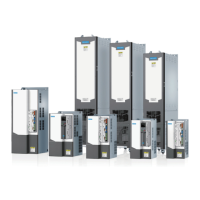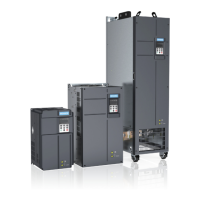Option Selection
‑148‑
K is set to 50% or an approximate value.
Pr indicates the power of the braking resistor.
D indicates the braking frequency, which is the proportion of the regenerative process
to the whole working process.
The following formulas can be generated based on the preceding equations:
K x Pr = Pb x D = U x U/R x D
Pr = (U x U x D)/(R x K)
The power of the braking resistor can be calculated by using the preceding formulas.
K is the derating coefficient of the braking resistor. A small value of K prevents the
braking resistor from overheating. You can increase the value of K under favorable
dissipation conditions; however, keep the value no larger than 50% to prevent the
resistor from being overheated and causing a fire.
Braking frequency (D) is determined by applications. Typical braking frequencies in
different applications are listed in "
Table 4–23
"
on page 148
.
Table 4–23 Typical braking frequencies in different applications
Application Elevator Winding and
unwinding
Centrifuge Occasional
braking load
General
application
Braking
Frequency
20% to
30%
20% to 30% 50% to 60% 5% 10%
Dimensions of a braking unit
There are two types of braking units with different dimensions.
Figure 4‑30 Dimensions of MDBUN series braking units (MDBUN‑45‑2T to MDBUN‑90‑2T;
MDBUN‑45‑T to MDBUN‑90‑T; MDBUN‑45‑5T to MDBUN‑90‑5T) (mm)

